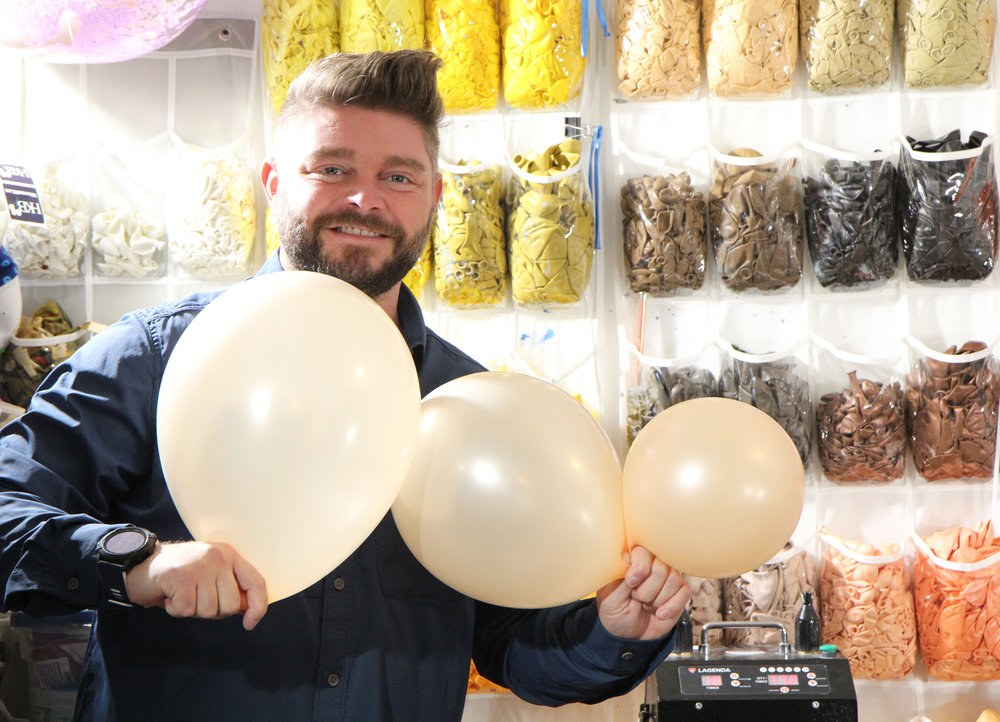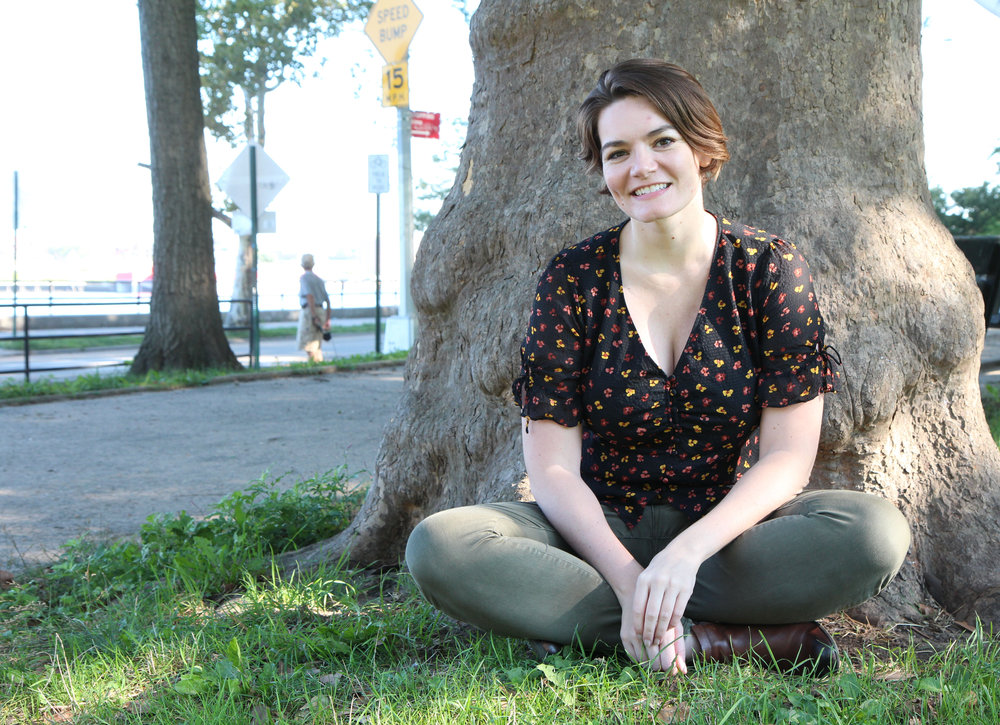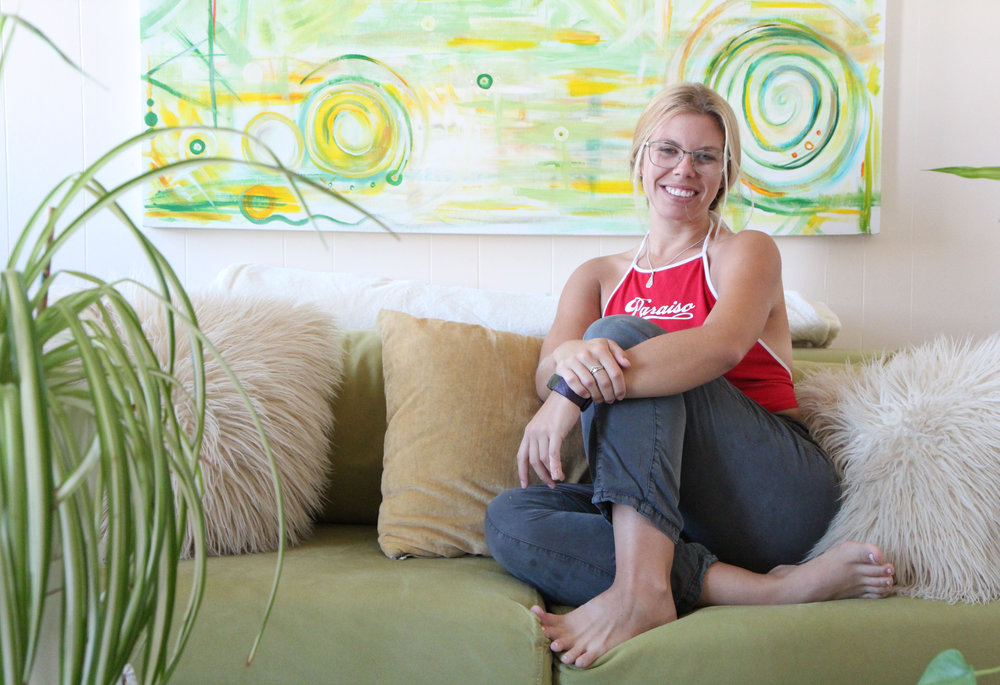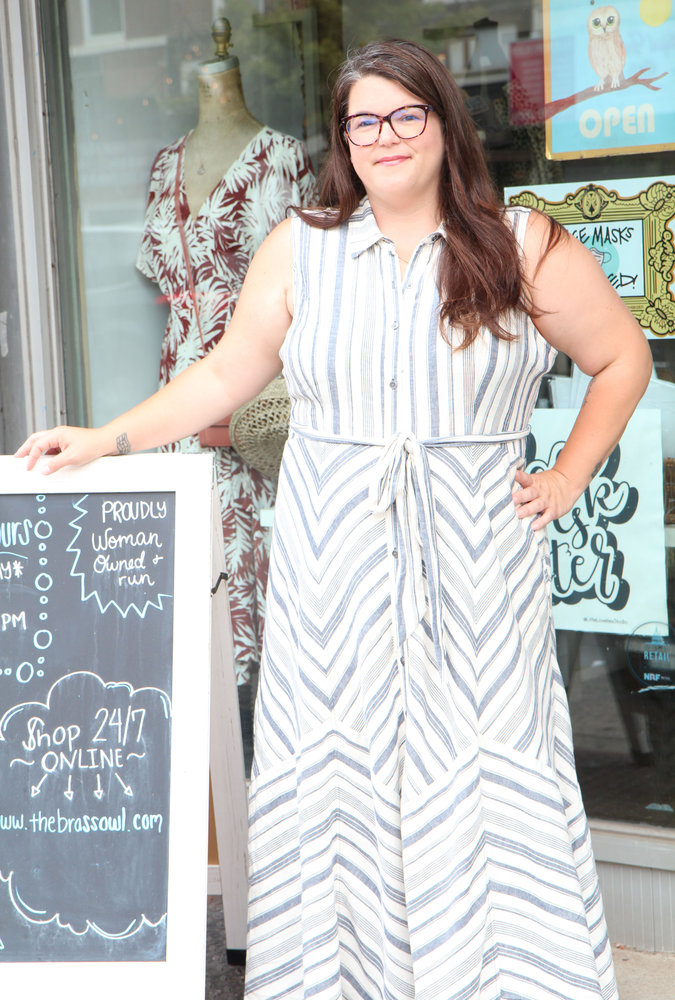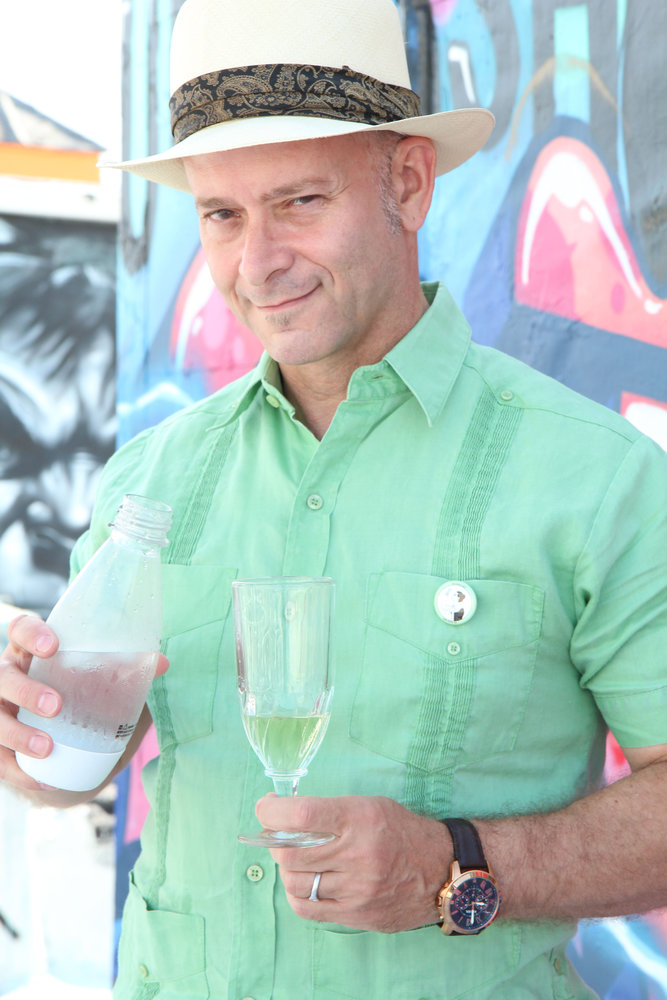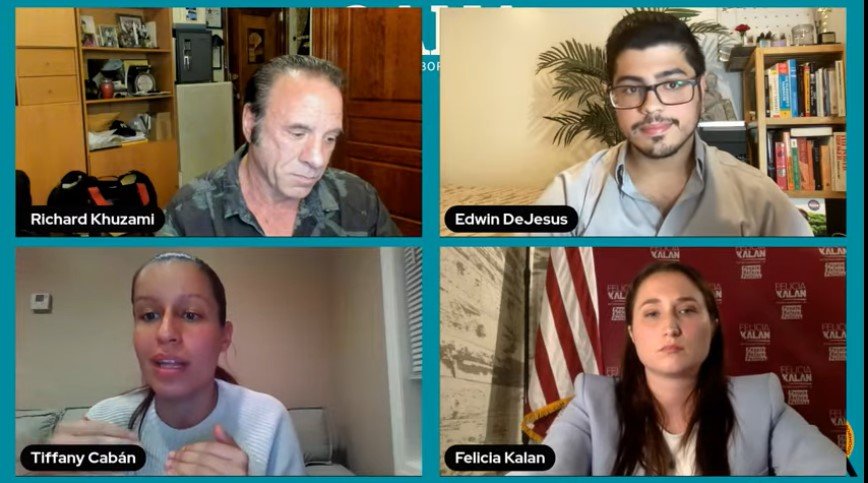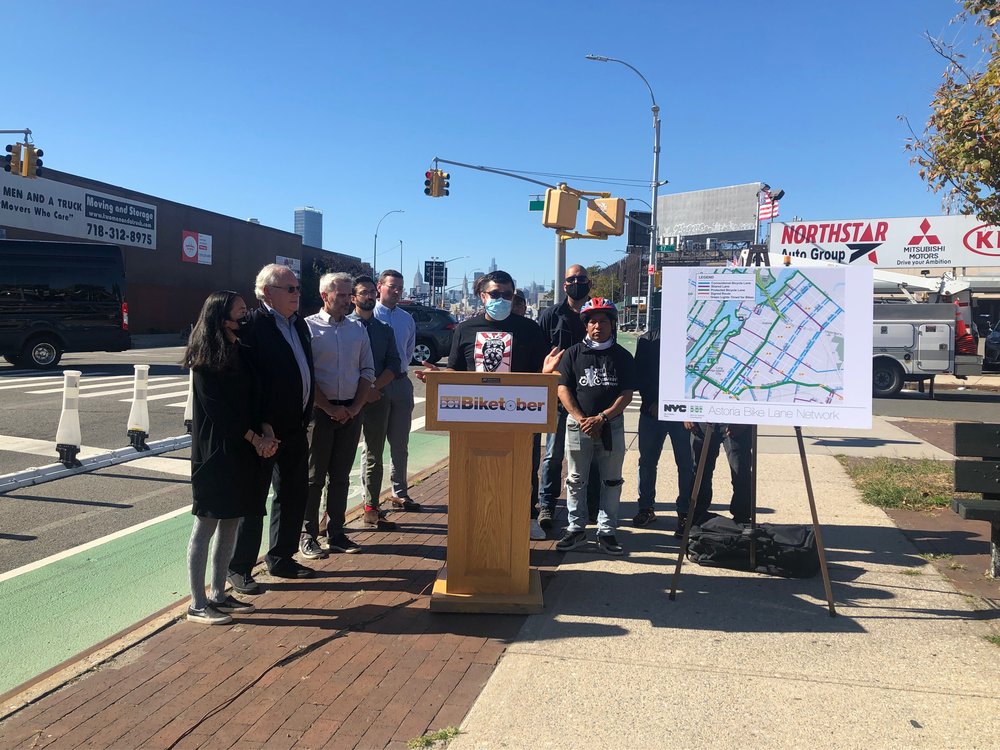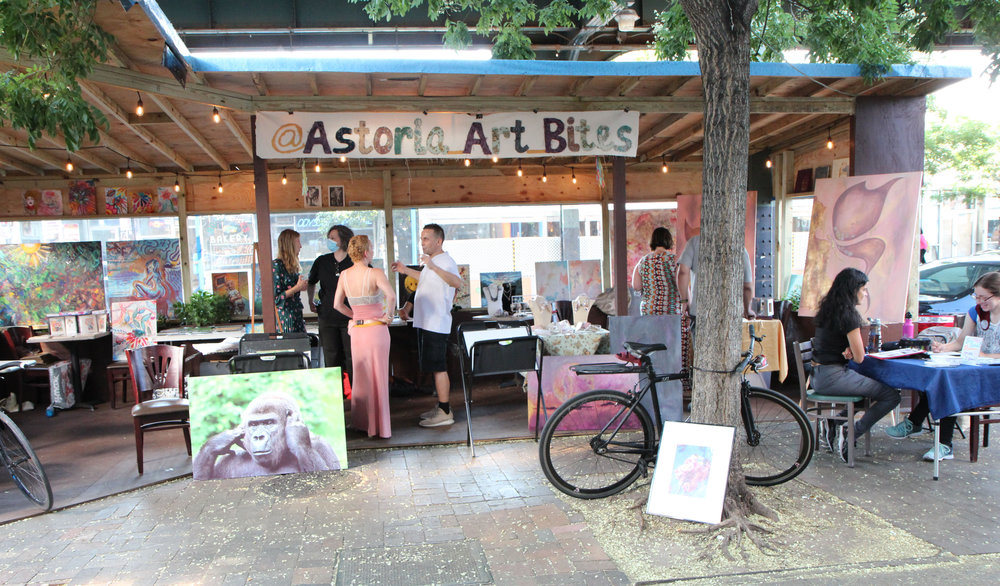The Balloon Sculptor
There is an art to breathing life into a balloon.
Hampton Keith Bishop selects one of the 600,000 unblown balloons that are hanging on the wall in a rainbow of color.
It happens to be a pretty pearl lemon chiffon hue.
He attaches it to a precision air inflator, the black box that can be carefully calibrated to release .1 to 9.9 seconds of air in a single instance.
He sets the buttons — .5 of a second, 1 second, 1.5 seconds – stopping at each to show the results as he pumps up the balloon to the perfect size.
Size isn’t the only balloon attribute Hampton can change; he’s an expert at altering colors.
He deflates the pearl lemon chiffon balloon and stuffs it with a spring green balloon, inserting one inside the other on the top of a long stick.
The black box does its magic, and the balloon-within-the-balloon blossoms into a luminous green/gold watermelon.
“It is,” he says, “like mixing paint.”
Since he started HKBalloons NYC at the end of 2015, Hampton has literally blown up hundreds of thousands of balloons sans a single premature pop.
His creations have appeared at corporate and celebrity events, have been exhibited at art shows and have starred in films (Survivor is coming out this year) and on TV (he’s done projects for several shows, including Saturday Night Live, Unbreakable Kimmy Schmidt, 30 Rock: A One-Time Special, Love Life, Blue Bloods, Girls5eva and Pose).
In 2018, for a satellite show by Maarkah at the Museum of the City of New York during New York Fashion Week, models wore gowns made of HKBalloons. (Hampton didn’t have a dress form handy so he used a body-size inflatable champagne bottle as a size guide for the expandable couture.)
And in the depths of the pandemic, Hampton created elaborate holiday balloon scenes outside his home office on Astoria Boulevard South facing Astoria Park.
“I didn’t have anything to do during the lockdowns,” he says. “I just needed to create something, so I designed them as messages of hope.”
Balloons, you see, represent happiness to Hampton, who is from Bowling Green, Kentucky. (If you listen carefully, you can still hear a slight accent through his smooth stage voice.)
He twisted his first balloon in first grade after his babysitter gave him a book on the subject.
His neighbor, a Ringling Bros clown who owned a costume shop, allowed Hampton to work in the store, tutored him on balloon twisting and mentored him on the finer points of musical theater, which was Hampton’s major at Belmont University.
“I was always fascinated by balloons and hot-air balloons,” Hampton says, “and I used to build giant sculptures out of trash bags in my front yard when I was a child. I loved being able to create something out of nothing.”
After graduating from college and working at Dollywood, Hampton moved to Astoria to hit the New York City musical-theater audition circuit.
Like all performers, he took a variety of jobs to pay the rent.
His stints with the custom holiday design company American Christmas, the show producer RWS Entertainment Group, and the party store Balloon Saloon proved pivotal to the formation of HKBalloons NYC.
The company (the HKB is Hampton’s monogram, and he’s delighted that it just so happens to end in B for balloon!) started out as nothing more than an imaginative idea.
“I started in my apartment with three to four bags of balloons,” he says. “And I twisted balloons in Central Park for tips at the end of the month to make enough money to pay my rent. Suddenly, it just took off.”
Hampton, who is a solo show, runs the company out of his basement and lives in the apartment above the office.
Sometimes clients ask him to replicate their designs; other times, they commission him to come up with ideas and execute them.
Large projects are blown up in sections in Hampton’s office and assembled on site, a job he likens to putting together a jigsaw puzzle.
“Sometimes, they take up my entire apartment, too,” he says, adding that when there’s still not enough space, he rents a box truck to store and transport them.
In May 2019, for instance, when HKBalloons NYC created the SNL set for the Jonas Brothers, Hampton made the 5,000-balloon sculpture in sections and trucked it to the Manhattan studio.
“I actually created it twice,” he says. “I did one for the color check and one for the live show. I popped all the balloons of the first one with scissors.”
That one really hurt, Hampton says, because nobody except the production crews got to see it.
That’s the thing about balloon sculptures – they are appealing, in large part, precisely because, like bouquets of live blooms, they aren’t supposed to last forever.
Speaking of forever, Hampton, who just turned 33, isn’t sure where his balloon business will lead him.
He’s at a point where he can pick and choose his projects, he’s just not sure what the next big thing will be.
He’s thought about expanding and hiring people to help him, but for now, he’ll just take things one balloon at a time.
Nancy A. Ruhling may be reached at Nruhling@gmail.com. Follow her on Twitter at @nancyruhling and visit astoriacharacters.com.


